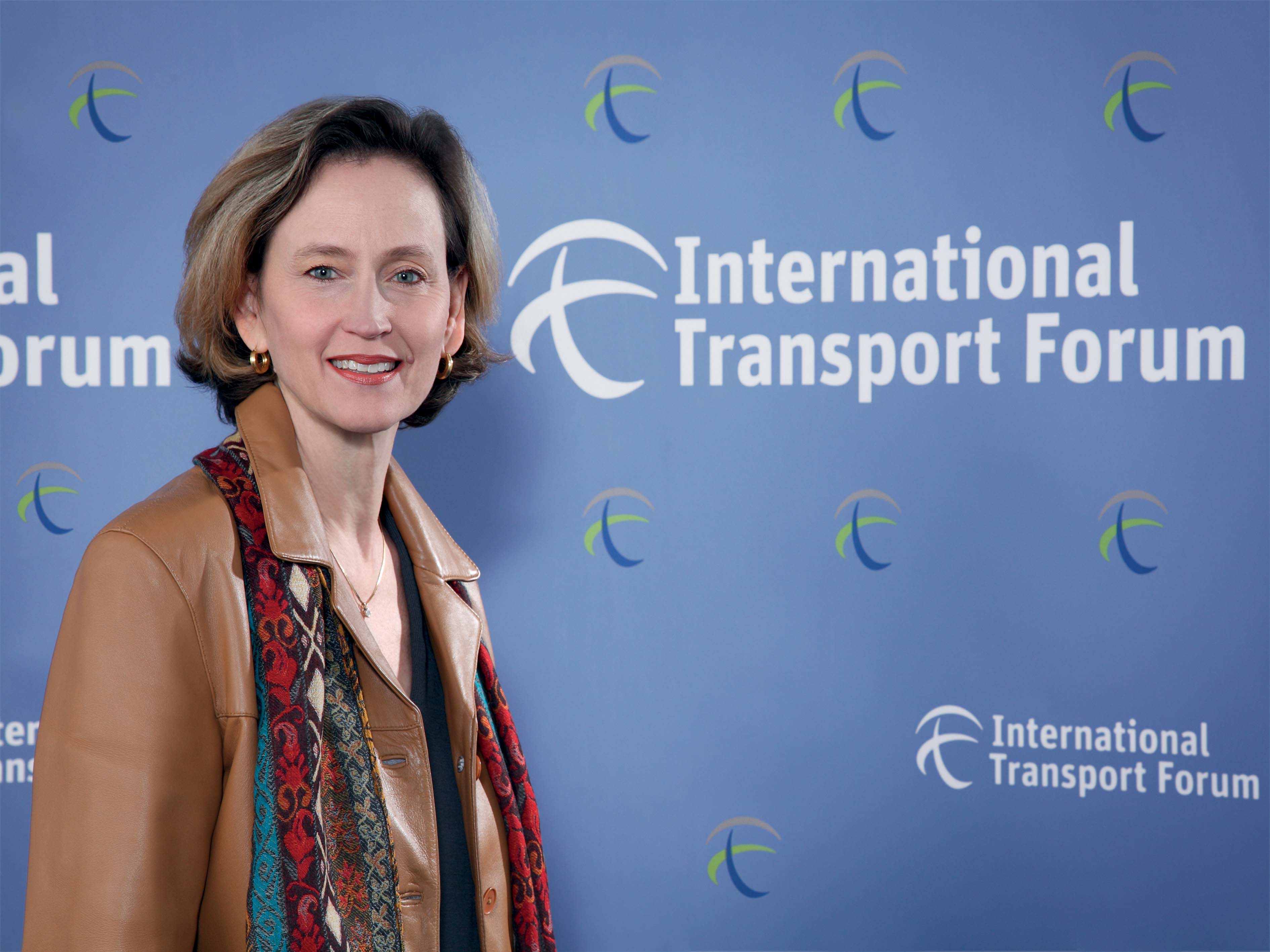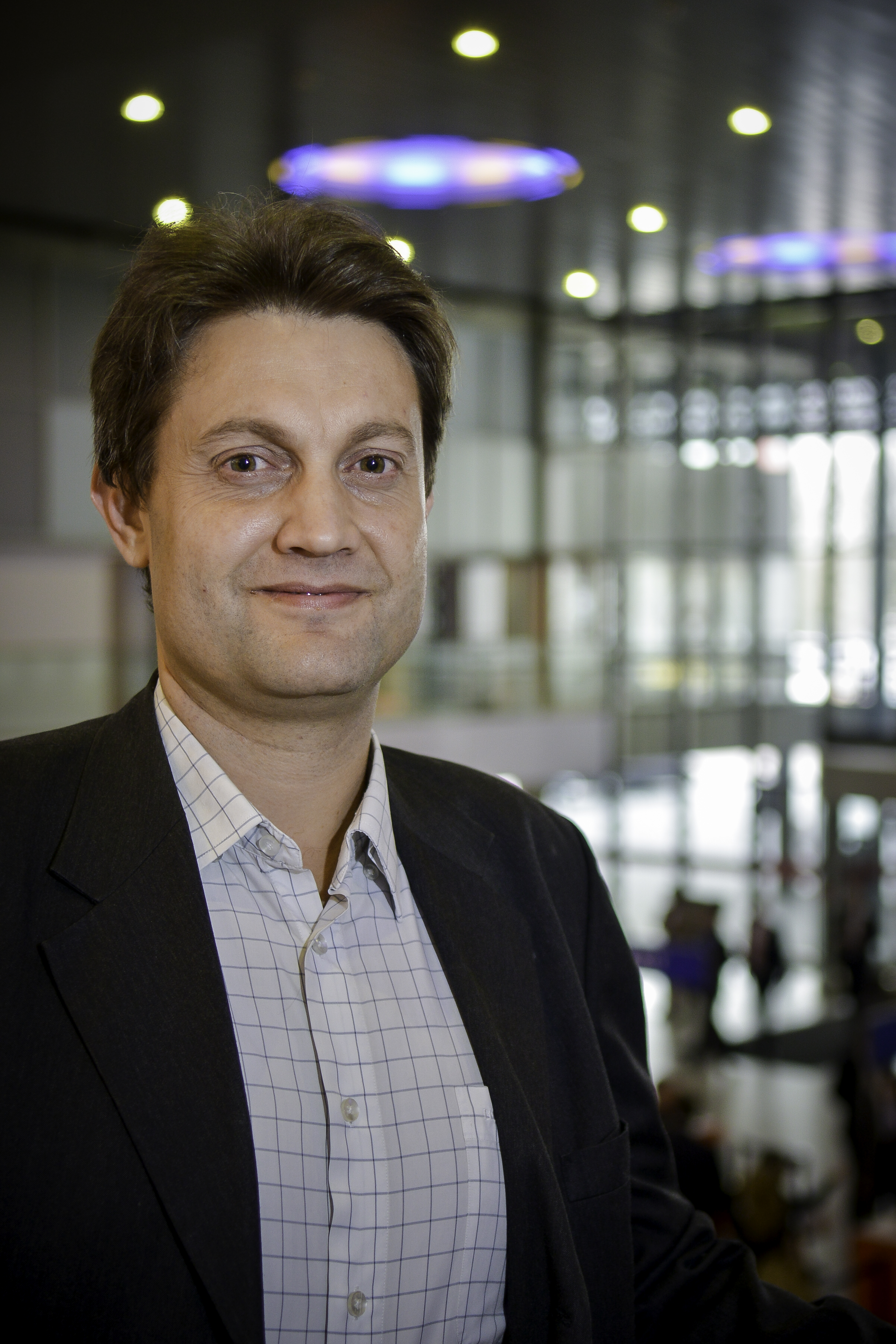
The ITF’s Mary Crass tells Colin Sowman why future transport demands will require governments to overcome the silo effect of individual single-modal authorities.
The only global multimodal transport policy organisation,” is how Mary Crass describes the
“We are an intergovernmental body so our principal interlocutors are the ministers responsible for transport in our member countries.”
Currently there are 57 member states ranging from Azerbaijan to America, China to Chile and Norway to New Zealand. Morocco has recently become Africa’s first member in the ITF. This span – both geographic and economic - enables the ITF to look at the ‘big picture’ and statistics from the OECD show that there is still work to do: CO2 emissions are climbing up the political agenda and previous falls in road fatalities have at best halted and possibly gone into reverse.
Of the latter Crass says: “One year’s performance is not always the best indicator but it is clear to us that there is a link between the reduction in road fatalities after 2008 and the onset of the economic downturn. Our work has shown that up to two-thirds of the decrease in road fatalities recorded since 2008 were linked to the economic downturn and in the absence of strong road safety policies, when economies turn around those gains may be reversed. There is evidence that many countries have made huge efforts to improve road safety such as larger scale enforcement of policies to reduce road fatalities.
“For For countries that have been performing well, it is becoming more challenging to continue to reduce traffic fatalities and there needs to be new thinking based on a safe system approach - a systemic look at the influences playing into the road safety performance.”
ITF member countries’ transport ministers come together for an annual summit based around key strategic themes of common interest to member countries. Crass says: “This provides the transport ministers the opportunity to discuss common transport issues that their countries are facing. At the core is a ‘Council of Ministers meeting’ in the context of a wider, diverse program that involves stakeholders from the highest level of the transport sector who have the opportunity to engage directly with ministers. It is not that the ministers are simply attending the sessions; they are fully participating and interacting with the ‘captains’ of transport industry, civil society and the research communities.”
While each country will have its own transport-related problems, there are areas of common interest such as Transport, Trade and Tourism, the theme of this year’s summit, while Green and Inclusive Transport will be discussed at the 2016 event.
Tourist travel
Crass cites tourism as a prime example: “Each country has a specific tourist profile – do tourists flock to the beaches or head for the cities - and environmental concerns. But there are many interlocking and common elements such as the fact that 50% of international tourists now arrive in a country by air. So what happens when they land, how easy is it for them to access the transport system in an unfamiliar country where they may not speak the language?“For these reasons it is essential that transport and tourism policies are coordinated – especially when tourism can account for up to 11% or 12% of GDP in some of our member countries.”
In addition to the Annual Summit, the ITF carries out a rich programme of policy analysis and research including direct assistance for countries requesting help on policy issues.
Topics for research are decided by member country research bodies and both emanate from and feed into the Annual Summit. Again Crass cites work around the 2015 Summit:
“With the OECD’s tourism unit we looked at how transport policy and tourism policy are handled in each country and if they were linked up or not. What we found was that in many countries the policies were developed in isolation; tourism in one silo, transport in another.”
ITF also helps individual member countries tackle specific policy issues – especially where time is a pressing factor. One example is working with the UK and Korean governments in developing analysis of airport capacity and helping Finland define obligations to provide public transport service to sparsely populated rural areas.
Urbanisation is an established global trend – one of the key areas of the ITF expertise, so what does Crass expect urban transport systems to look like in 2025?
“There won’t be one solution for all cities and in 10 to 15 years we will probably see an emanation of where cities are now because investment in transport systems is a long-term enterprise so radical change takes much longer.
“However, the transport sector is developing in a number of exciting ways; during my 20 years in the sector, I have rarely seen so much convergence in terms of technical and policy innovation. A combination of low-tech and high-tech solutions is transforming the way mobility in cities is being perceived.
“Many cities are moving in the right direction – car and bike sharing schemes are now taking hold and starting to show signs of real benefit to mobility. This will no doubt continue and innovation in ride sharing through digital technology and mobile applications will continue to provide better and more efficient real-time information to travellers so they know these alternatives to private vehicle use are available.”
Shared taxis
The ITF is currently doing focused work on shared taxis (taxis which are shared simultaneously by several passengers) and Crass believes the outcome could be extremely significant. “It’s early days yet but what is emerging is compelling evidence that in certain circumstances and in some cities, shared taxis can alleviate the need for further development of some traditional public transport services.
“The perception of traditional public transport is evolving fast with both users and service providers having an emerging understanding of how more complete real-time information can be used to improve the efficiency of travel. Mobile information platforms are transforming the way people interface with public transport services and new types of providers are entering the sector, representing an enormous opportunity for the transport services market.
“It could take about 10 years for the integrated manifestation of these new services to emerge and to form a new perception of public transport in a ride sharing, car sharing and bike sharing economy. These developments are running in parallel with demographic dynamics where in many parts of the world, growing numbers of older people will require more accessible mobility solutions and in some countries, many young people are no longer concerned about getting a driving licence – they have everything they need to access mobility services in their mobile phone.
“In 10 years I think we could see the crystallisation of this wave of innovation and it will be really blossoming and taking hold. It is beholden on the authorities to do what is necessary from a legislative and regulatory perspective to facilitate this change in a robust framework.”
So do authorities have to create a vision of the transport system they want, or do they wait to see how the situation develops?
“The authorities in many countries are finding themselves on the back foot at this time – in a reactive rather than a proactive position. In many instances these new forms of ride sharing are currently functioning outside of the legislative framework but they are being greeted with a very positive consumer reaction. So the authorities are now in a position where they will need to adapt the regulatory framework to this new environment. We are actively exploring this with a number of countries.
“And it is not just about bringing the Ubers of this world back into the regulatory framework, it is also about adapting the framework because in many cities around the world the current framework is not efficient and is not meeting consumer demand.”
With regards to private transport Crass predicts that the increasing deployment of automation could lead to improved safety for drivers and reduced congestion, saying: “The first step is to work through the various levels of automation that are currently available – mass use of fully autonomous vehicles may be outside the 10 to 15 year time frame. There are no doubt efficiencies and safety benefits to be gained, possibly accessibility benefits too, existing legislation needs to ensure that these vehicle are commensurate with the public’s expectation of safety.”
Local authorities
In the area of environmental action Crass notes that devolved authorities in some countries have been more proactive than national governments. “Looking globally; currently 97% of transport is still dependent on fossil fuel and overall the sector contributes about 25% of the world’s CO2 emissions with road transport being the biggest contributor. And with our predictions through to 2050 showing big growth of road transport, if no action is taken there will be a significant increase in transport-related CO2 emissions. So something has to be done – the question is what?“Technology alone cannot do this. We have done a variety of analytical exercises to see which policy initiatives would bring about the greatest change in a given time frame and cost. Integrated packages of policies will be required. In the short-term technology may provide the most cost-effective solution. But for the longer term, transport policy will need to adopt a low-carbon profile which will necessitate an integrated approach. There will need to be a basket of policies that favour low-carbon modes. Cycling and walking need to come out of the margins of transport policy and be fully integrated as areas of policy focus – not added to projects as an afterthought.
“In combination with 30km/h zones and vehicle-free areas, walking and cycling can do a lot to reduce overall CO2 emissions in cities. Electric cars offer opportunities too – though they are not zero emission solutions and their actual emissions are depend on the country’s electricity generating profile. There is also a need to address environmental concerns in the manufacture of electric cars, so they are not ‘the’ solution but a solution for certain mobility situations in a low-carbon transport structure.
What will be needed will be a variety of energy sources including hydrogen, potentially solar - depending on how it continues to develop - and bio-fuels, although not in the broad-based way that was the focus a few years ago.”
She believes it will take some time for these new technologies to reach massive market scale, and until then there will be a need to continue to focus on fuel efficiency with existing engine technologies.
“For the longer term, the planning of integrated transport is critical. While this is often cited as an important measure by governments around the world, it is still very elusive in many countries and needs to be enshrined in policy at a national, regional and local level. This needs a lot of vertical coordination in terms of land use and transport planning - and that’s where many such initiatives come to a halt.”
Crass says that recently the ITF has been considering a paradigm shift in transport planning: “In the traditional planning approach, the focus has been on finding mobility solutions. That has been a linear path which has led us to the unsustainable situation we see in most developed countries,” adding, “and repeated in many emerging and developed economies.
“This approach needs to be turned on its head with focus on providing access to opportunities and amenities, employment, public services and leisure activities as the primary planning consideration, with determination of the means to facilitate that access following on from there.
“If you start by looking at where the people are, where they need to get to and the most efficient way to get them to their destination, that automatically opens up opportunities to consider all the different travel modes. The solution may not be a new road, it could well be a public transport facility, bus or train line or infrastructure to facilitate walking or cycling to the destination.
”There are many examples around the world of impressive transport projects being implemented that fail to provide the efficient services the local population requires.
“An access-led perspective facilitates that broader view. ITF is currently doing some exploring of how this can be achieved in developed countries, with anticipation that these findings will push this concept forward. We are starting our analysis by looking at access to public transit and considering indicators for measuring access to specific types of public transport infrastructure, and the effects of that on mobility.”
So even when you take a global view, it seems everything still boils down to mobility of the individual.









